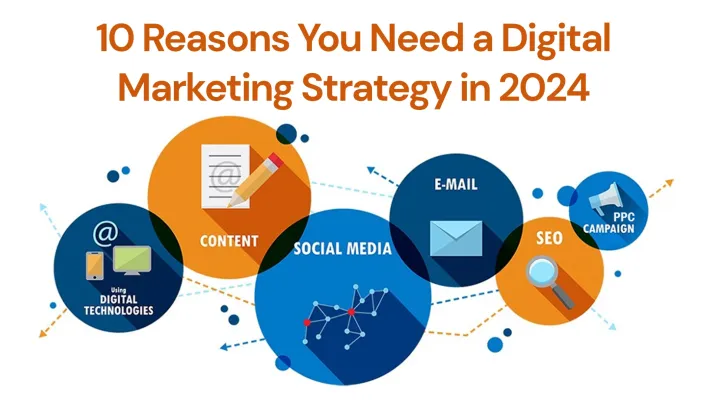
A well-optimized website is essential for businesses to succeed online in today’s digital economy. SEO is essential for increasing your website’s exposure in search engine results and attracting organic visitors.
Introduction
A well-optimized website is essential for businesses to succeed online in today’s digital economy. SEO is essential for increasing your website’s exposure in search engine results and attracting organic visitors. We have provided a thorough checklist of nine crucial actions to help you optimize your website and boost its online presence in order to assist you in managing the complexity of SEO.
Step 1: Keyword Research to Target Audience
The most important step in any SEO plan is to undertake careful keyword research. Determine the appropriate keywords and phrases that members of your target market will probably use to find goods and services related to your company.Utilize keyword research tools and consider factors such as search volume, competition, and user intent. By incorporating these keywords strategically into your website’s content, meta tags, and headings, you can improve your chances of ranking higher in search engine results.
Step 2: On-page Optimization
On-page optimization is the process of making specific adjustments to web pages in order to raise their search engine ranks and increase organic traffic.Title tags, meta descriptions, headings (H1, H2, H3, etc.), and URL structures should all be optimized. Ensure that your content is well-structured, relevant, and incorporates your target keywords naturally.Additionally, optimize your images by using descriptive alt tags and compressing them for faster page load times.
Step 3: Optimizing Technical SEO for Performance
Technical SEO involves optimizing the technical aspects of your website to improve its performance and crawlability by search engines. Some essential technical optimizations include ensuring your website is mobile-friendly, improving page load speed, optimizing site architecture, and implementing structured data markup.By addressing technical issues and providing a seamless user experience, you can enhance your website’s visibility and rankings.
Step 4: Link Building for Authority and Trust
Building high-quality backlinks from authoritative websites is a critical aspect of off-page SEO.Engage in ethical link-building practices, such as guest blogging, creating valuable content, and reaching out to relevant influencers or industry experts for collaboration.Acquiring quality backlinks helps search engines recognize your website as a trustworthy and authoritative source, improving your rankings and driving organic traffic.
Step 5: User Experience – Engaging and User-Friendly Design
SEO must deliver a positive user experience to be effective. Make sure your website has a beautiful, user-friendly style and is simple to use on a variety of devices. Enhance your website’s usability, performance, and accessibility for all users, including those with disabilities.
Step 6: Creating and Publishing Valuable Content
Any SEO strategy that is successful must start with content. Make relevant, engaging, high-quality content that appeals to your target audience’s interests and aspirations.Naturally blend your goal keywords into your prose while maintaining readability and uniformity. Regularly add new content to your website, such as blog posts, articles, videos, or infographics, to keep your audience interested and attract new visitors.
Step 7: Local SEO – Optimizing for Local Searches
If your business serves a specific geographic area, optimizing your website for local searches is crucial.Create a Google My Business profile, optimize your business listings across various online directories, and encourage customers to leave reviews.Incorporate location-specific keywords within your content, meta tags, and headings to improve your chances of appearing in local search results.
Step 8: Monitoring Analytics to Track Progress
You must track and study the performance of your website using analytics software like Google Analytics in order to ascertain the effectiveness of your SEO efforts.Keep tabs on crucial statistics like keyword rankings, bounce rates, conversion rates, and organic traffic.You may identify areas for improvement, gain insight into user behavior, and adjust your SEO strategy by analyzing these indicators.
Step 9: Continuous Optimization with Regular Updates
SEO is an ongoing process that requires continuous optimization and updates. Stay updated with the latest trends, algorithm changes, and industry best practices.Regularly audit your website’s performance, conduct keyword research, and optimize your content accordingly. Monitor your competitors and adapt your SEO strategy to maintain a competitive edge in the ever-evolving digital landscape.
Conclusion
The visibility of your website, gaining organic traffic, and reaching your target audience all depend on search engine optimization. By using this SEO checklist, you may create a solid foundation for your website’s optimisation and drive long-term growth online. For long-term success, give top priority to keyword research, on-page optimisation, technical SEO, link development, user experience, the production of worthwhile content, local SEO, analytics tracking, and ongoing optimisation.
FAQs
Q1. What is keyword research, and why is it important for SEO?
Finding pertinent words and phrases that members of your target market use when looking for goods or services is the goal of keyword research. It is essential for SEO since it enables you to comprehend user intent, optimize the content of your website, and raise your positions in search engine results.
Q2. How long does it take to see results from SEO efforts?
The length of time it takes to get results from SEO can vary based on a number of variables, including the level of industry competition, the complexity of the keywords you choose, and the effectiveness of your SEO activities. It typically takes several months before organic rankings and traffic begin to noticeably increase.
Q3. What is the difference between on-page and off-page SEO?
On-page SEO is the process of optimizing specific web pages, including their content, meta descriptions, and headings, to raise their search engine ranks. The goal of off-page SEO, on the other hand, is to increase authority and trust signals for search engines by constructing backlinks from other websites.
Q4. How can I improve my website’s loading speed?
You can reduce the size of your images, activate browser cache, minify CSS and JavaScript files, use a content delivery network (CDN), and pick a trustworthy web host all to speed up the loading of your website.
Q5. Is SEO a one-time process, or do I need to continuously optimize my website?
SEO is an ongoing process that requires continuous optimization and updates. Search engine algorithms change frequently, user behaviors evolve, and competition increases. To maintain and improve your website’s visibility and rankings, regular optimization and adaptation are necessary.






